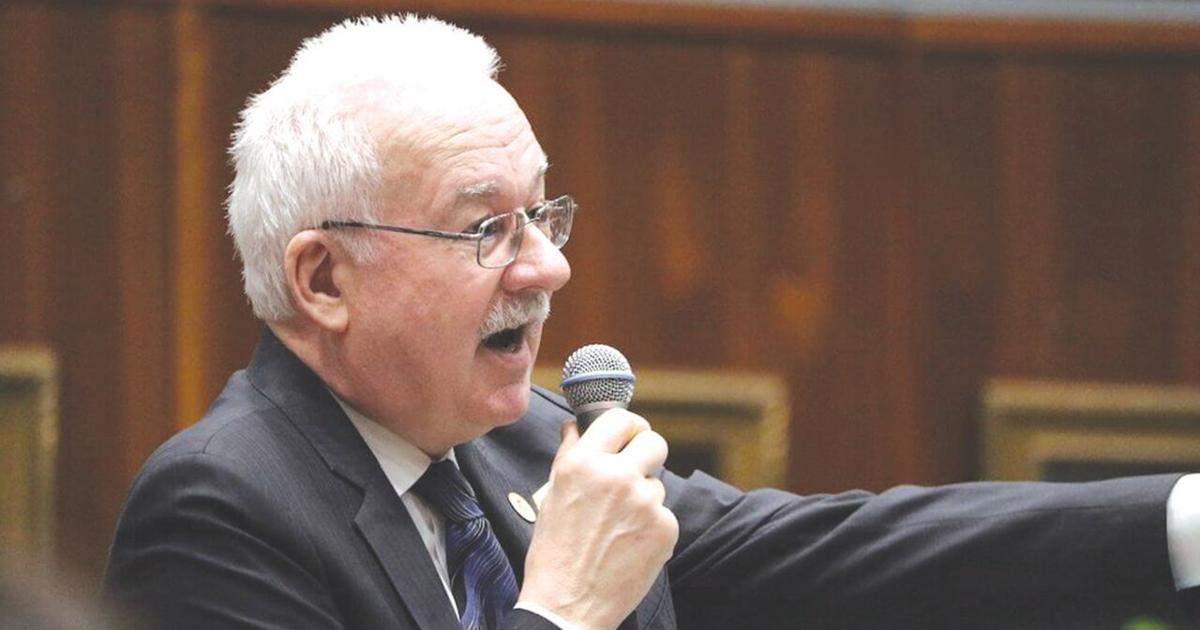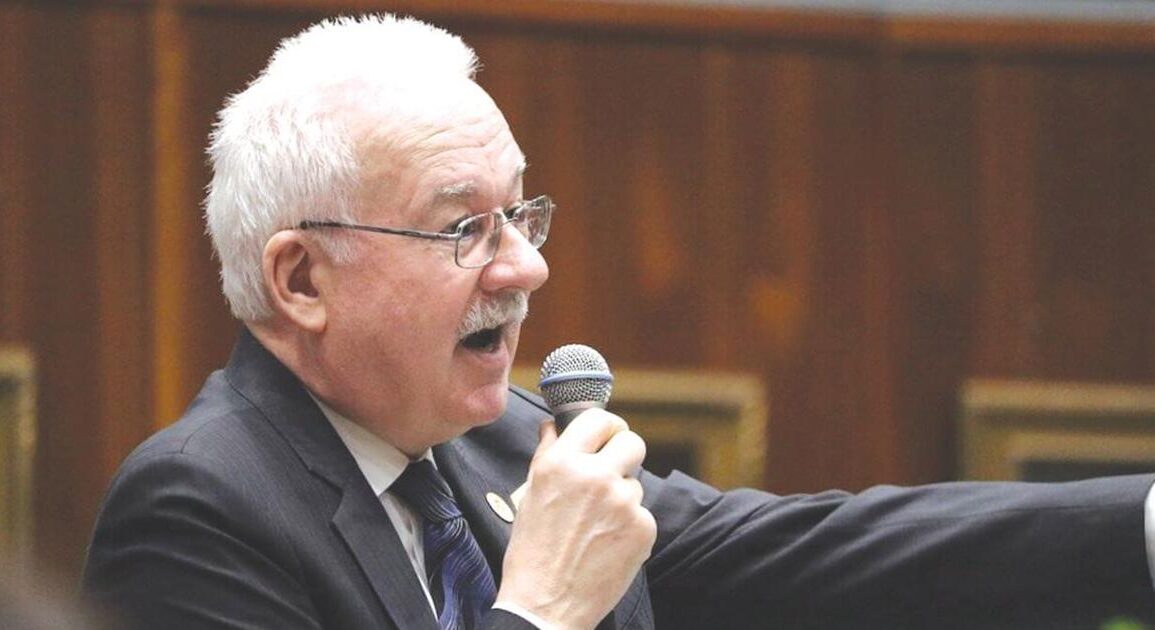
Arizona’s prison system will boost spending and medical staffing for prison healthcare by more than a third as it works to meet a federal judge’s orders that it vastly improve treatment of the nearly 25,000 prisoners in state-run prisons.
But the move puts added pressure on a state budget that is already deep in the red.
State Corrections Director Ryan Thornell told lawmakers last week that he expects the boost in contracted per-day medical care rate to satisfy orders from the judge to improve medical, mental and other inmate treatment.
U.S. District Judge Roslyn Silver issued a sweeping injunction in April that required massive improvements in prisoner treatment.
The added costs – $117 million in the coming budget year – add to the pressure on a state budget that already has a projected $400 million shortfall in the current budget and $450 million in the next budget, which begins on July 1.
And none of that counts for the yet-to-be-determined additional cost to the state of universal vouchers of tax dollars for students to attend private and parochial schools.
Much of that shortfall is blamed on a massive income tax cut enacted in 2021 by the Republican-controlled Legislature and former Gov. Doug Ducey that replaced graduated tax rates and with a flat rate – a move that primarily benefited the wealthy.
The tax went into full effect early this year and the legislature’s budget analysts said last month that individual income tax collections are down by 27% since the fiscal year began on July 1.
The new prison healthcare spending is just one of several items that will blow even bigger holes in the state budget, putting pressure on Hobbs and the Republican-controlled Legislature to make cuts elsewhere to deal with the shortfall.
A far bigger budget-buster comes from Arizona’s Medicaid program for low-income residents. It will need an additional $600 million from the state general fund to fund the Arizona Health Care Cost Containment System, commonly known as AHCCCS.
AHCCCS currently provides medical insurance to 2.2 million Arizonans, a drop of more than 300,000 since a federal pandemic-era bar on kicking people off the program expired on April 1. The Legislature’s budget analysts expect another 40,000 people to drop off the rolls by June.
But the decreased spending on the lower population count – the program insures 30 percent of the 7.25 million Arizona residents – is erased by a big cut in federal reimbursement rates, higher payments to providers due to inflation and policy decisions by lawmakers to boost child healthcare.
That led AHCCCCS to request the extra $600 million in next year’s budget, according to a review of state agency budget requests.
The Department of Economic Security, which oversees a host of social safety net programs, also said it needs an additional $133 million from the general fund next year. Nearly $110 million of that will pay for increased costs of caring for the developmentally disabled from boosts in caseloads, higher medical costs and a cut in federal matching fund rate.
Other state agencies are also seeking more money to account for inflation.
That leaves lawmakers looking for ways to trim spending, while adding new funding for required prison health spending.
Hobbs spokesman Christian Slate has declined to discuss next year’s prison spending.
Silver said the medical care provided inmates is `”plainly grossly inadequate’’ and state officials are acting “with deliberate indifference.”
In a 200-page ruling, she said top prison officials were aware of conditions that resulted in serious and unnecessary physical injury and death to inmates but that they actively ignored the problems.
The Joint Legislative Budget Committee signed off on the boost in prison healthcare spending last week.
That contract revision increased payments to private health provider NaphCare in a series of steps from $32.19 per day per inmate to $42.47 a day on July 1. It requires the company to boost staffing by 382 full-time positions, bringing the total number of doctors, nurses and other health staff to nearly 1,500 by June 30, 2024.
NaphCare’s total yearly pay for the prison health contract started at $280 million when it took over inmate care in October, 2022, and will sit at $388 million per year by next June assuming 25,000 inmates. The contract with former provider Centurian, which won the contract in 2019, paid it $203 million in the 2022 budget year.
The increase will leave a $117 million shortfall in next year’s budget.
Rita Lomio, an attorney with the Prison Law Office that was involved in the decade-old inmate healthcare lawsuit, said a major part of Arizona’s problem is relying on contractors. That’s required by a law passed in the early 2010.
“They’ve now burned through three or four providers, and none of them have been able to do it,” Lomio said.
“For us, it just seems clear that they’re basically funneling a lot of money not into health care but into a for-profit company to provide healthcare,’’ she said. “And that’s inefficient, it’s wasteful and it’s not resulted in the end of this litigation.’’
Sen. John Kavanagh, R-Scottsdale, said that lawmakers will have to work to trim expenses in already-pledged spending like $600 million in new highway appropriations in the current budget and in agency requests so that the state has a balanced budget, as required by law.
“First of all, asking isn’t getting,’’ he said of agency budget requests. “Obviously we took the first step yesterday in authorizing the money for corrections because we’re under pressure from the lawsuit.
“But most of that will probably be getting through the prison correctional officer vacancies,” he added.
The Department of Corrections, Rehabilitation and Reentry has been unable to find qualified applicants to staff all the positions for which it has funds.
“In addition, we can defer many of the capital projects that are in the pipeline,” Kavanagh said. “And that’s the way we’ll do it.”
Rep Athena Salman, D-Tempe, pointed to the tax cuts as the big culprit for the budget squeeze, calling the state’s funding crisis “self-inflicted.”
— the flat tax was just a huge blow to the budget,’’ she said.
What is not on the table for either Kavanagh, who heads the Senate Appropriations Committee, nor Rep. David Livingston, his counterpart in the House, is tapping the state’s $1.5 billion rainy day fund.
“The shortfall we have now is large but not monumental in a $16 billion budget, and we’ve faced worse shortfalls and survived,” Kavanagh said.
And he defended the tax cuts.
“Arizona has an excellent business climate and those tax cuts attract a lot of businesses which are generating revenue,’’ he said. “So using a dynamic analysis I think the tax cuts and helped us and not hurt us.’’
This post was originally published on this site be sure to check out more of their content.









